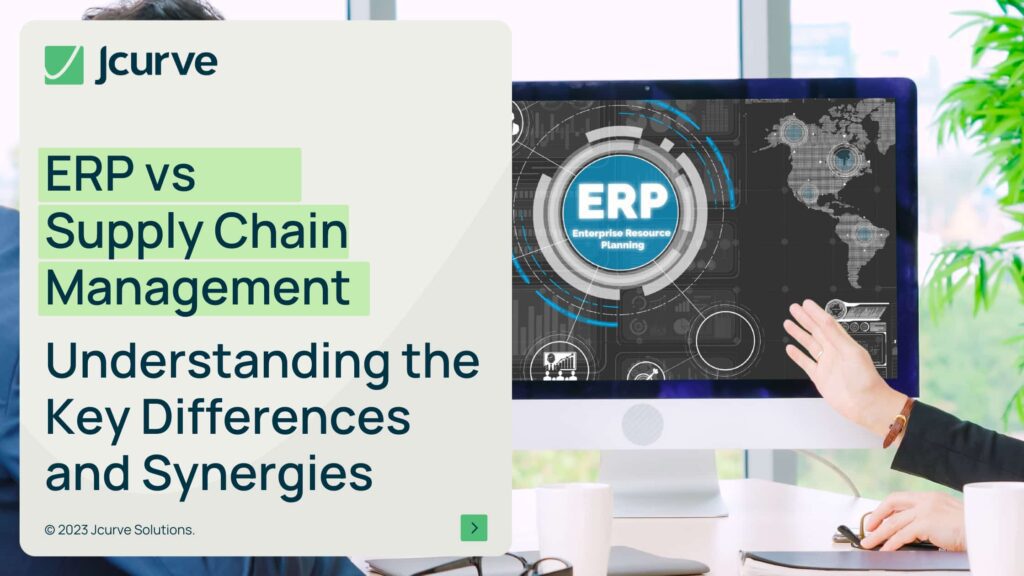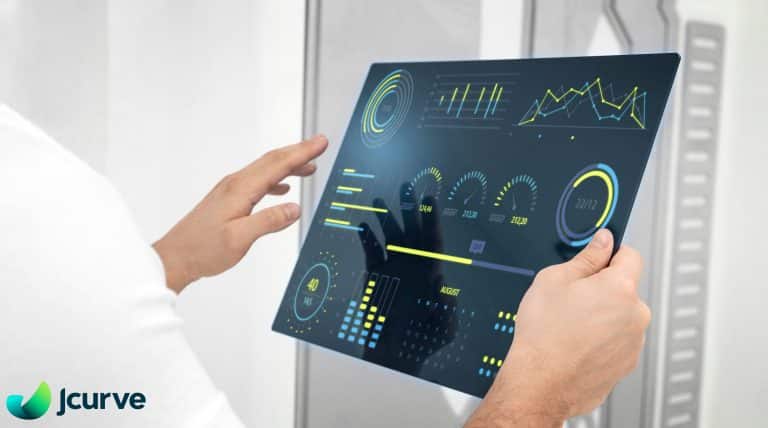In the ever-evolving landscape of modern business, understanding the intricacies of Enterprise Resource Planning (ERP) and Supply Chain Management (SCM) has become imperative. While both systems are pivotal for streamlined operations and enhanced efficiency, distinguishing between ERP and SCM, as well as leveraging their synergies, is crucial for strategic business planning.
This article delves into the key differences and synergies between ERP and SCM, shedding light on how businesses can optimise their operations by understanding and integrating these systems effectively.
What is ERP (Enterprise Resource Planning)?
At its core, ERP is a software system designed to streamline and integrate internal business processes across finance, human resources, manufacturing, and other departments. Its primary aim is to facilitate the flow of information within an organisation, thereby enhancing decision-making and efficiency. ERP systems serve as the backbone of a company’s internal operations, centralising data and providing a unified platform for managing various business activities.
- Finance & Accounting: Manages financial transactions, budgeting, and financial reporting.
- Human Resources (HR): Automates employee management, from recruitment to retirement.
- Manufacturing: Supports production planning, inventory management, and product lifecycle management.
- Customer Relationship Management (CRM): Enhances customer service and sales management.
What is SCM (Supply Chain Management)?
SCM, on the other hand, extends beyond the confines of a single organisation, focusing on managing the entire flow of goods and services from raw materials to the final customer. The objective of SCM is to enhance collaboration, efficiency, and responsiveness across the supply chain network, including suppliers, manufacturers, distributors, and retailers.
- Procurement: Securing raw materials and services needed for production.
- Production: Overseeing the manufacturing process and scheduling.
- Distribution: Managing the logistics of getting the final product to the customer.
- Logistics and Transportation: Ensuring efficient, timely delivery of goods.
SCM aims to create a seamless and optimised supply chain that enhances product flow and meets customer demands efficiently.
ERP vs SCM: The Key Differences
While ERP and SCM may seem similar at first glance, several key differences distinguish the two systems:
- Functional Focus: ERP is primarily focused on optimising internal business processes, while SCM concentrates on external supply chain operations.
- Objective Alignment: ERP systems aim to streamline and integrate internal operations to improve efficiency and decision-making. In contrast, SCM seeks to enhance collaboration and efficiency across the entire supply chain.
- Software Integration: ERP integrates various business processes within an organisation, whereas SCM facilitates integration between different entities in the supply chain.
- Data Management: ERP systems centralise internal data for comprehensive analysis, while SCM focuses on managing and analysing data across the supply chain to improve logistics and supply chain efficiency.
Advantages and Disadvantages
SCM Software
| Advantages | Disadvantages |
| Enhanced Supply Chain Visibility | Complex Integration with Existing Systems |
| – Provides real-time tracking of materials and products. | Integrating SCM software with current systems can be complex and time-consuming. |
| Improved Supplier Relationships | Dependency on External Entities |
| Facilitates better communication and collaboration with suppliers. | Success depends on the cooperation and capabilities of external supply chain partners. |
| Increased Efficiency and Reduced Costs | High Initial Setup Costs |
| Optimises logistics and reduces waste, leading to cost savings. | The initial investment in SCM software can be high, including training and implementation. |
| Better Demand Forecasting | Requires Continuous Updating |
| Uses data analytics for more accurate demand planning. | Needs regular updates and adjustments to stay effective, which can be resource-intensive. |
| Agility and Flexibility | Risk of Overreliance |
| Allows for quick adjustments to supply chain disruptions. | Over reliance on software may lead to vulnerability if the system fails. |
ERP Solutions
| Advantages | Disadvantages |
| Streamlined Business Processes | High Implementation Costs |
| Integrates all departments and functions across a company. | The total cost of ownership, including customisation and training, can be significant. |
| Improved Data Accuracy and Decision-Making | Complexity and User Adoption |
| Centralises data, reducing errors and providing insights for better decisions. | ERP systems can be complex, leading to challenges in user adoption and resistance. |
| Increased Productivity | Lengthy Implementation Process |
| Automates routine tasks, freeing staff to focus on more strategic activities. | Implementation can take a long time, disrupting current business operations. |
| Scalability | Flexibility Issues |
| Can grow with the business, adding new modules or functionalities as needed. | Customising ERP solutions to specific business needs can be difficult and costly. |
| Enhanced Security | Dependence on the Vendor |
| Provides robust data security features to protect sensitive information | Businesses may become dependent on the vendor for updates, support, and enhancements. |
How ERP and SCM Complement Each Other
Integrating ERP with SCM systems can elevate business performance by merging their distinct benefits, resulting in enhanced operational insight, decision-making, and customer satisfaction.
- Enhanced Visibility: Integrating ERP with SCM provides end-to-end visibility across internal operations and the external supply chain, enabling more informed decision-making.
- Streamlined Operations: The seamless flow of information between ERP and SCM systems can help streamline operations, reduce redundancies, and optimise resource allocation.
- Improved Inventory Management: Real-time data exchange between ERP and SCM systems can lead to more accurate inventory tracking, reduced overstocking or stockouts, and improved order fulfilment rates.
- Better Demand Forecasting: Combining internal sales data from ERP with external supply chain insights from SCM allows for more accurate demand forecasting and production planning.
Implementing ERP and SCM Systems
Adopting ERP and SCM systems can seem daunting, but with the right approach, organisations can smoothly navigate the implementation process and realise the benefits of integrated business and supply chain management. Discover how Jcurve can guide your journey towards successful ERP and SCM integration, offering tailored solutions that fit your business needs.
Cost Analysis: ERP vs SCM Software
When considering the adoption of Enterprise Resource Planning (ERP) and Supply Chain Management (SCM) software, the cost analysis becomes a pivotal factor in the decision-making process.
Variables Influencing Cost
- Software Vendor: The market offers a range of providers, each with different pricing strategies and service levels.
- Partner for deployment: The choice of partner for implementation can significantly affect costs, based on their expertise and the complexity of the integration.
- Model of software licensing: Options vary from perpetual licences to subscription-based models, impacting upfront and ongoing costs.
- Initial Investment costs: Initial expenses include software purchase, implementation, and system setup.
- Regular maintenance fees: Regular maintenance fees for software updates, system support, and troubleshooting.
- System management: Costs associated with managing the system internally, including dedicated personnel.
- Education and skill development: Investment in training for users to effectively use the ERP or SCM system.
- Integration with existing hardware: Necessary hardware purchases or upgrades to support the new system.
- Connectivity with additional software solutions: Expenses related to integrating the ERP or SCM software with existing business systems.
- Routine updates and security enhancements: Regular updates are essential for security and functionality, incurring additional costs.
- Model of system deployment (local vs.cloud-based): Choosing between on-premise or cloud-based solutions affects both initial and ongoing expenses.
- Personalisation and setup: Tailoring the system to meet specific business needs can significantly increase costs.
- Overall ownership expenses: The cumulative cost of implementing, maintaining and operating the system over its lifecycle.
Conducting a Cost-Benefit Analysis
A comprehensive cost-benefit analysis is crucial for businesses planning to implement ERP or SCM systems. This analysis should consider not only the direct costs listed above but also the anticipated benefits in terms of efficiency gains, productivity improvements, and competitive advantages.
Key Considerations When Choosing ERP and SCM Solutions
- Business Requirements: Clearly define your business needs and objectives to choose solutions that align with your strategic goals.
- Scalability: Opt for systems that can scale with your business, accommodating future growth and evolving supply chain dynamics.
- Integration Capabilities: Ensure the ERP and SCM solutions can be effectively integrated to facilitate seamless data exchange and process coordination.
- Vendor Support and Community: Consider the level of support and the presence of a user community around the solutions for easier implementation and troubleshooting.
ERP systems are generally more expansive in scope, integrating various internal processes whilst SCM systems focus on external supply chain optimisation. The choice between the two should align with the organisation’s strategic goals and operational needs.
NetSuite ERP offers scalable and integrative solutions that cater to both internal processes and supply chain optimisation, aligning with strategic business requirements.
Challenges and Best Practices in Implementation
- Data Migration and System Integration: Meticulously plan the migration of existing data to the new systems and ensure robust integration for smooth operation.
- Change Management: Prepare your organisation for change by involving key stakeholders early and providing adequate training to users.
- Continuous Improvement: Post-implementation, continuously monitor system performance and user feedback to identify areas for improvement and optimise the use of ERP and SCM systems.
Partnering with Jurve for NetSuite ERP solutions ensures access to a team of accredited consultants in Australia, renowned for their deep expertise and tailored approach to ERP integrations. Jcurve’s extensive experience guarantees a seamless, effective transformation of your business processes.










